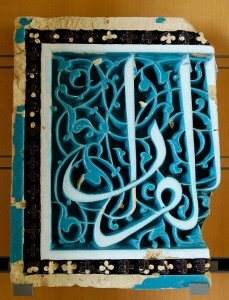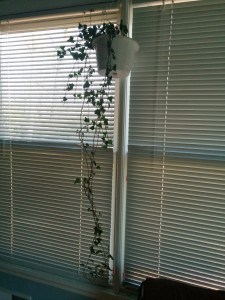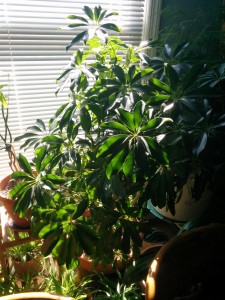Arabesque (Week 6)
March 17th, 2014
One of the prominent features of Islamic art and architecture is the arabesque, or geometric ornament. An example of an arabesque is seen below:

Scholars of Islamic art have come up with various interpretations of the arabesque, looking at its abstraction as a sign of infinite correspondence in mathematical sciences or its delicate appearance as a sign of femininity as detailed in “The Topaki Scroll” by Gulru Necipoglu. However, one of the more prominent interpretations of the arabesque pick up on its allusion to nature.
As described in the documentary “Islamic Art: Mirror of an Invisible World”, the arabesque can serve as a witness to God’s creation. God created the world as al-Muhyi, the Giver of Life to all the creatures (8:24). In all of creation, there is not only the face of God, but also the ayah or the signs of God are all around for the creatures to interpret (2:115, 2:164). Including images of nature in works of art is one way of not only celebrating and praising the beauty of God’s creation but also in becoming closer to God.
With all of this in mind, I found that there were also signs of nature and God’s creation in the plants around my house. Among the few that I saw, I picked out a few that I felt were the most geometric, resembling the orderly nature of God’s creation.
Then I represented each one with a different color in paper, layered on top of each other to create a vibrant arabesque that reflects my own surroundings of God’s creation, my own context, made with my own materials and skills, as common in a cultural-studies approach.
The reason I chose bright colors is because as described in the documentary “Islamic Art: Mirror of an Invisible World”, color is an important means of demonstrating meaning in Islamic art, and I happened to choose colors that would represent nature and life the most (green and yellow) as well as passion and fire (red). Additionally, I worked with the nature of the plants, using the linked nature of the cactus-leafed plant to set the sturdy structure of the piece demonstrating that faith is a constant around which all else is built, the symmetry of the many leafed plant to highlight brilliance akin to the sun to demonstrate that God is the Light, and the swirling stems of the ivy to demonstrate the turbulence and adventure each day will bring.
Though not nearly as intricate as a arabesque carved out of a block of wood (rather, from the pulp of wood that once was), the piece captures the spirit and the essence of this fundamental feature of Islamic art.




Leave a Reply